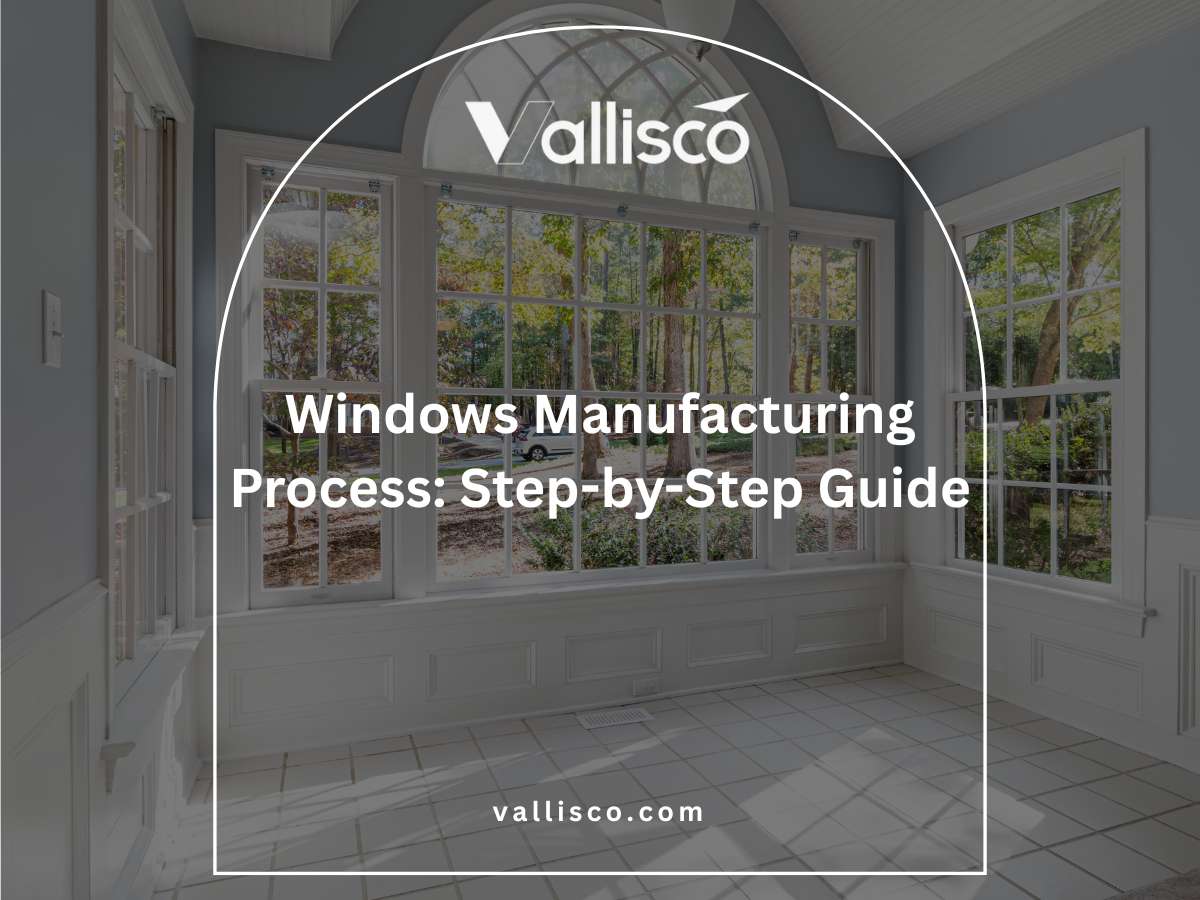I remember the first time I had to choose doors for a warehouse project. I thought it would be simple to just pick something sturdy and move on. It turned out to be more complicated than that.
That experience taught me how much the right door impacts security, energy use, and even workflow.
I’ve worked with engineers, contractors, and property owners, and I’ve seen which door types last and which ones give constant headaches. That’s why this review comes from experience, not theory.
In this article, you’ll see the top 7 commercial warehouse door types. Each one is broken down with pros, cons, and uses, so you can figure out what fits your project best.
Choosing a warehouse door doesn’t have to feel like guesswork.
So let’s begin!
Quick Comparison Chart
Before we dive into the deeper details, here’s a quick side-by-side glance. It’ll help you get familiar with what each door does best and where it might fall short.
| Door Type | Best Uses | Key Features | Not Ideal For |
| Roll-Up Steel Doors | Distribution centers, storage facilities, industrial warehouses | Space-saving coil design, strong security, long lifespan | Small businesses with tight budgets |
| Sectional Overhead Doors | Climate-sensitive warehouses, hotels, commercial garages | Good insulation, customizable, quiet operation | Facilities with limited ceiling clearance |
| High-Speed Fabric Doors | Cold storage, cleanrooms, logistics hubs | Rapid operation, energy control, lightweight and easy to repair | Locations needing maximum break-in protection |
| Aluminum Glass Doors | Greenhouses, showrooms, hospitality spaces | Natural light, modern look, corrosion resistant | High-security warehouses or heavy industrial use |
| Fire-Rated Rolling Doors | Manufacturing plants, hotels, hazardous storage | Fire resistance, integrates with alarms, meets code compliance | Everyday use where quick manual access is needed |
| Sliding Metal Doors | Agricultural warehouses, industrial sites, greenhouses | Wide openings, simple mechanics, cost-friendly | Tight facilities without side clearance space |
| Folding Doors (Bi-Fold) | Aircraft hangars, distribution warehouses, large storage buildings | Wide span coverage, no ceiling tracks, can be automated | Smaller facilities with low maintenance capacity |
Now that you’ve got a quick look, it’s time to walk through the real-life details. Each section ahead gives you the full picture.
1. Roll-Up Steel Doors
I remember working on a warehouse dock where the ceiling space was almost nonexistent. Traditional doors kept breaking, but once roll-up steel doors were installed, the workflow finally smoothed out. Roll-up steel doors are made from interlocking slats that coil into a compact roll above the doorway, making them both space-efficient and durable for heavy-duty use.
Where It Works Best
- Distribution Centers: Perfect for busy docks with trucks coming in and out all day. The rolling design saves ceiling space and avoids delays.
- Storage Facilities: Common in commercial storage where long-term security is a priority. Their compact action leaves room free for shelving and equipment.
- Industrial Warehouses: Suited for plants and factories that need a door tough enough to handle daily use without constant repairs.
Key Features
- Space-Saving: The vertical roll keeps floors and ceilings clear for operations. This maximizes usable space inside the facility.
- Durability: Steel construction stands up to harsh weather and physical impact. It’s stronger and longer lasting than lighter alternatives.
- Security: Offers solid resistance against break-ins, making it dependable for high-value goods.
- Cost Factor: More expensive to purchase and install compared to sectional doors. Smaller operations may feel the pinch on budget.
Final Thought
Roll-up steel doors are a dependable choice for businesses that value strength, security, and efficiency. However, the higher upfront cost can make them less appealing for small-scale projects.
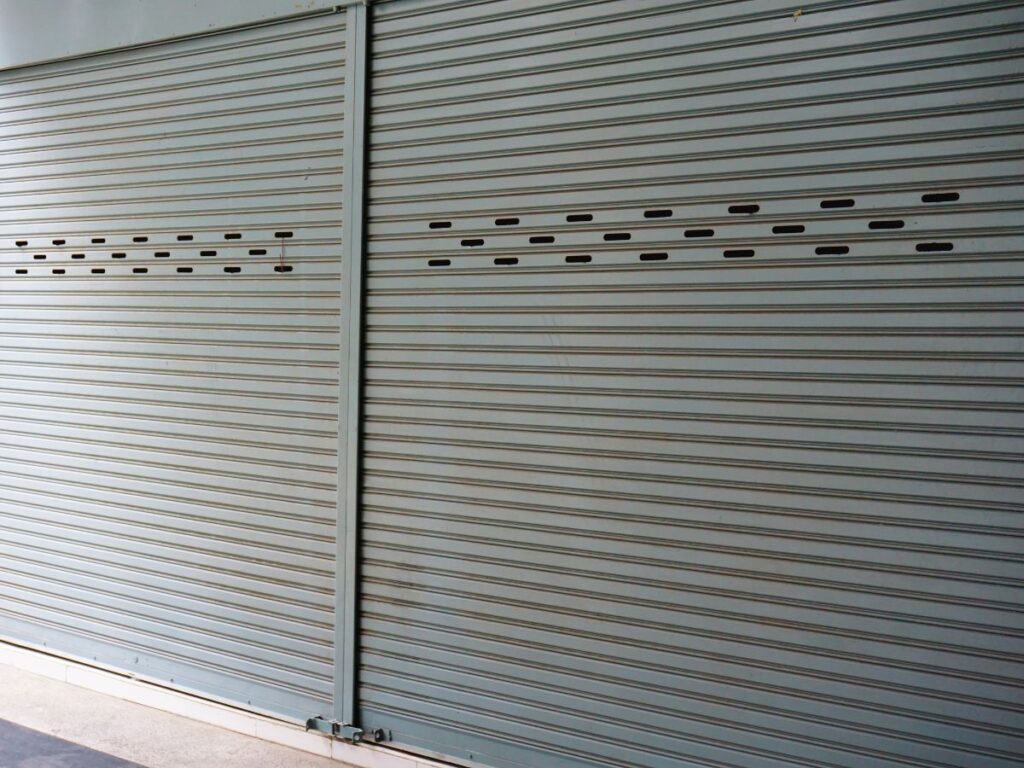
2. Sectional Overhead Doors
On a hotel project I worked with, noise from deliveries became a constant complaint. Switching to sectional overhead doors solved the issue because they opened smoothly and sealed tightly, cutting down both noise and drafts. These doors are built from large hinged panels that slide upward along tracks and rest flat against the ceiling, offering both insulation and quiet operation.
Where It Works Best
- Climate-Sensitive Warehouses: Excellent for facilities storing food, pharmaceuticals, or other goods that require temperature stability. Their insulation helps lower energy use.
- Hospitality Properties: Hotels and B&Bs benefit from their quiet opening and aesthetic finishes. They’re practical when guest areas are close to service zones.
- Commercial Garages: Often used in maintenance or service bays where large, frequent access is needed but security and appearance matter too.
Key Features
- Insulation: Provides strong thermal performance, keeping interiors more energy efficient. This reduces heating and cooling costs in climate-controlled warehouses.
- Custom Options: Available in a variety of finishes, windows, and panel styles. This makes them adaptable to businesses that also value presentation.
- Smooth Operation: Tracks and hinges allow for easy, quiet movement. Staff can work nearby without constant noise disruption.
- Maintenance Factor: Multiple moving parts mean more potential wear. Regular servicing helps keep them reliable.
Final Thought
Sectional overhead doors are a smart fit for businesses that need insulation, noise reduction, and flexibility in design. However, they require ample ceiling space and regular maintenance to stay effective.
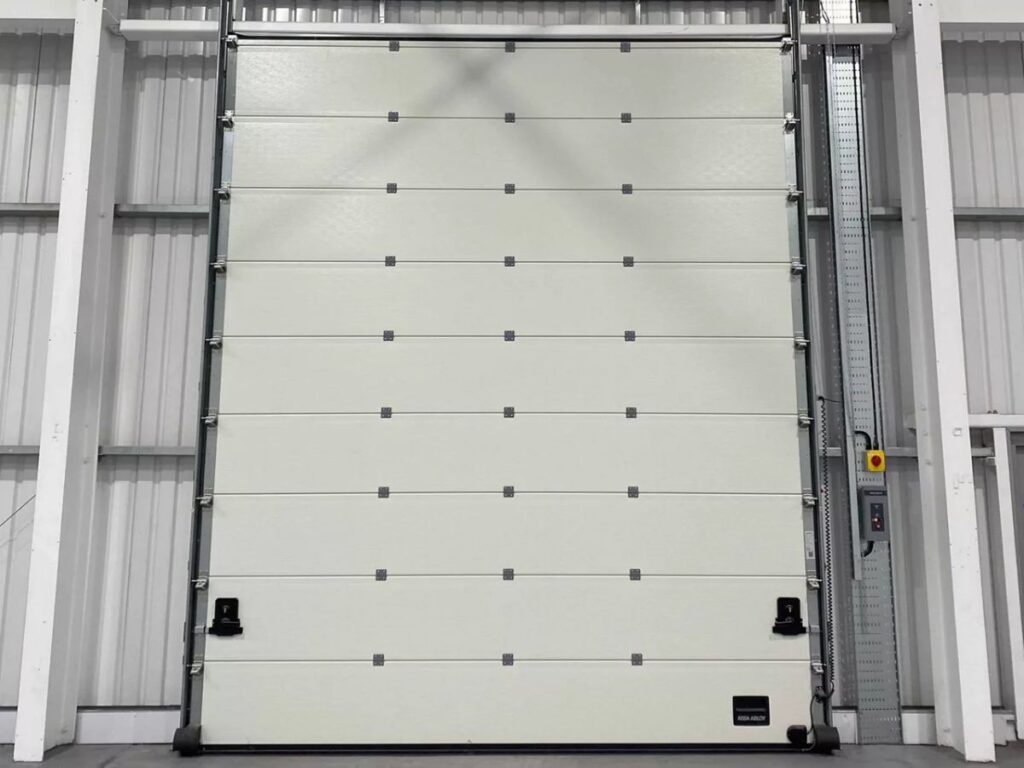
3. High-Speed Fabric Doors
During a cold storage facility visit, I watched workers rush in and out with pallets of frozen goods. The standard doors let too much air escape, but when high-speed fabric doors were added, energy loss dropped sharply, and workflow improved. These doors are made from durable fabric sheets that move up and down rapidly with motorized systems, reducing exposure and controlling interior conditions.
Where It Works Best
- Cold Storage Warehouses: Perfect for facilities handling frozen or refrigerated goods. Fast action minimizes warm air entering and cold air escaping.
- Cleanrooms and Labs: Keeps dust and contaminants out while allowing frequent movement of staff and equipment. This protects product quality and compliance.
- High-Traffic Logistics Hubs: Efficient for busy distribution centers where goods need to move quickly between zones without slowing down operations.
Key Features
- Speed: Opens and closes much faster than metal doors. This keeps goods and workers moving efficiently in high-demand environments.
- Energy Control: Limits heat transfer and drafts. Over time, this helps businesses cut down on utility expenses.
- Lightweight Build: Uses flexible fabric instead of rigid panels. This makes repairs simpler and less costly compared to heavy steel doors.
- Security Limits: These doors are not as strong against break-ins. They work best where internal control is the main goal, not perimeter defense.
Final Thought
High-speed fabric doors are excellent for industries that need climate control and fast movement, such as cold storage or logistics. However, they are less effective for businesses where maximum physical security is a priority.
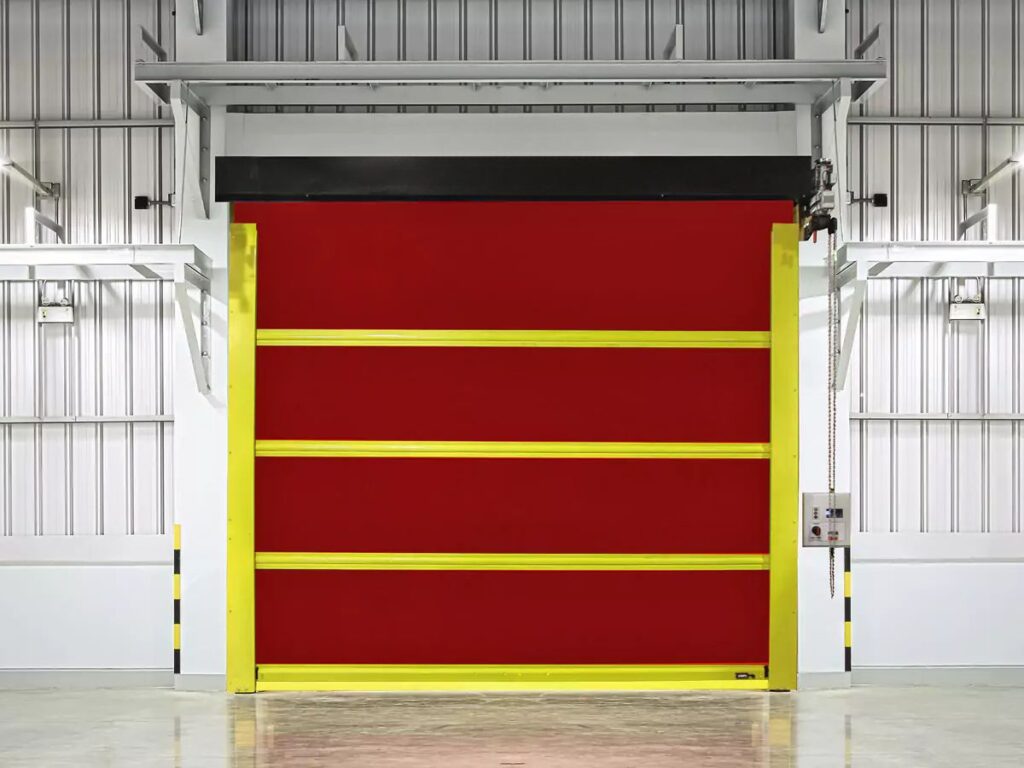
4. Aluminum Glass Doors
I once toured a greenhouse that struggled with poor lighting and constant need for artificial lamps. After installing aluminum glass doors, natural light poured in, reducing costs and creating a much better working environment. These doors combine lightweight aluminum frames with clear or frosted glass panels, giving businesses both function and a modern appearance.
Where It Works Best
- Greenhouses: Excellent for letting sunlight pass through while keeping the structure secure. This reduces reliance on artificial lighting and lowers energy costs.
- Showrooms: Ideal for auto shops, retail fronts, or display areas where visibility matters. They highlight products while still providing controlled access.
- Hospitality Properties: Hotels and villas sometimes use them in storage or service zones that benefit from natural light and a more polished look.
Key Features
- Light Transmission: Allows natural light indoors, cutting lighting costs and creating brighter spaces. This makes them practical in environments that depend on daylight.
- Modern Appearance: Clean lines and glass finishes improve the overall aesthetic. Businesses gain a professional look while maintaining functionality.
- Corrosion Resistance: Aluminum frames resist rust even in humid or damp environments. This ensures longer service life with less upkeep.
- Security Trade-Off: While attractive, they are not as strong against forced entry as steel options. Extra reinforcement may be needed in high-risk areas.
Final Thought
Aluminum glass doors are a practical choice for businesses that value natural light and aesthetics along with day-to-day usability. Vallisco offers solutions that balance function with design, making them a solid choice for greenhouses, showrooms, or hospitality spaces looking for efficiency and style.
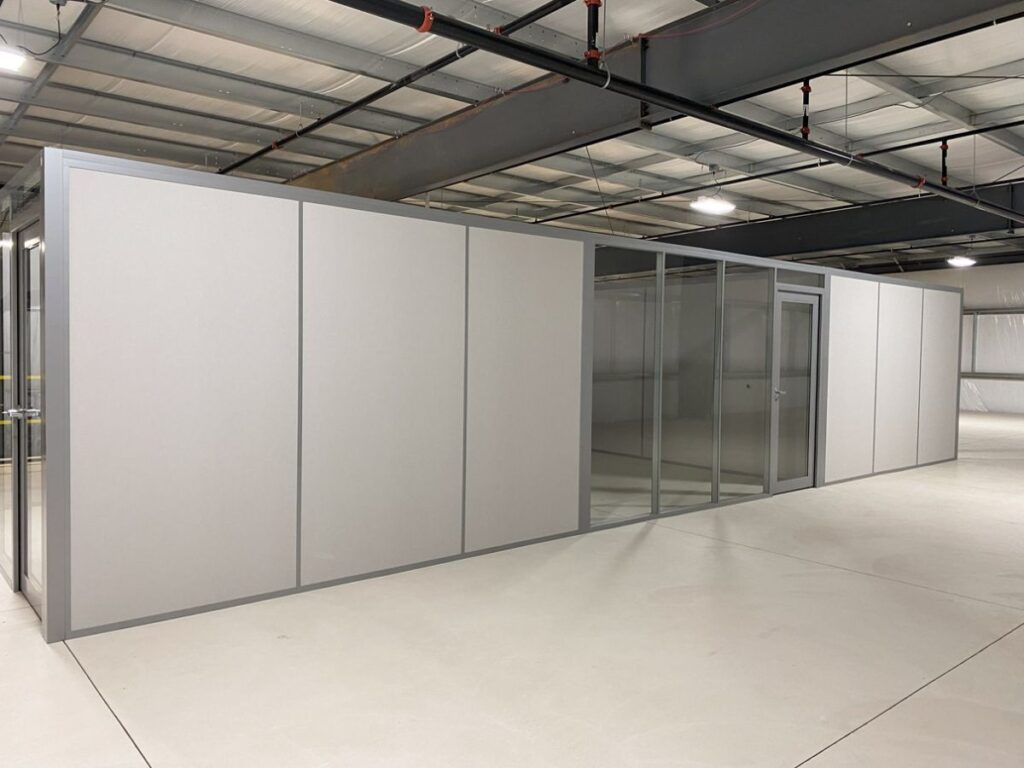
5. Fire-Rated Rolling Doors
On a factory walkthrough, I noticed entire sections divided by heavy fire-rated rolling doors. The manager told me those doors had already contained a small fire once, preventing it from spreading to valuable equipment. These doors look similar to standard roll-ups but are built with fire-resistant materials and are designed to close automatically when triggered by alarm systems.
Where It Works Best
- Manufacturing Plants: Critical in facilities handling flammable chemicals or machinery. They provide extra safety during fire emergencies.
- Hotels and Public Buildings: Often required by building codes in areas that separate kitchens, storage, or boiler rooms. They help businesses stay compliant.
- Warehouses with Hazardous Goods: Used in facilities storing paper, textiles, or chemicals where fire risk is high.
Key Features
- Fire Resistance: Built to withstand high heat and prevent flames from spreading. This buys time for evacuation and fire response.
- Integration with Alarms: Can be connected directly to fire detection systems. Once triggered, they close automatically to secure the area.
- Code Compliance: Helps businesses meet safety regulations and insurance requirements. This is especially important for commercial or public buildings.
- Cost and Weight: Heavier and more expensive than standard doors. They also require regular testing to remain reliable.
Final Thought
Fire-rated rolling doors give businesses peace of mind by adding a critical layer of safety and compliance. However, their higher cost and ongoing testing requirements can add to long-term expenses.
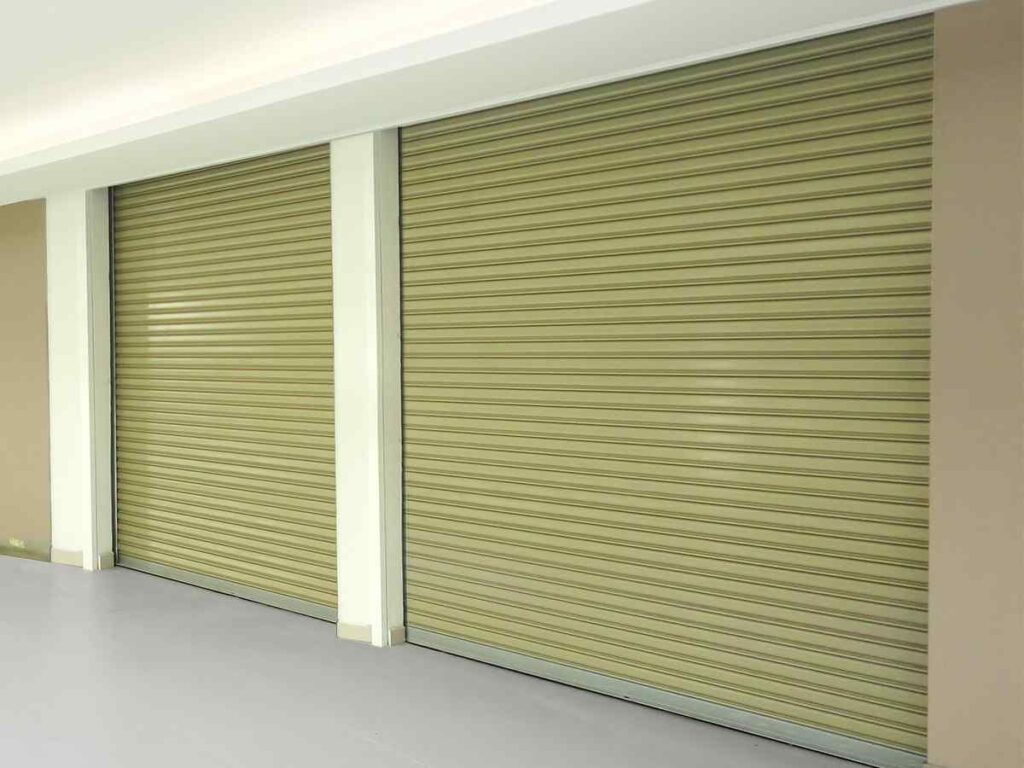
6. Sliding Metal Doors
During a visit to a grain storage site, I saw workers struggle with overhead doors that constantly jammed. They later switched to sliding metal doors, and the difference was immediate — wide access without the mechanical issues. These doors move horizontally along a track, making them simple and effective for large openings.
Where It Works Best
- Agricultural Warehouses: Ideal for barns, silos, or grain storage where openings are wide and ventilation matters. The sliding design avoids overhead clutter.
- Industrial Facilities: Useful for factories with oversized equipment that requires broad entryways. Their straightforward build makes them dependable.
- Greenhouses: Practical for long spans where natural airflow is important. Sliding panels allow partial or full opening as needed.
Key Features
- Wide Access: Provides clear entry for large vehicles and machinery. This is valuable in agriculture and heavy industry.
- Simple Mechanics: Fewer moving parts mean fewer breakdowns. This lowers repair costs over time.
- Cost-Friendly: Typically more affordable than complex overhead or rolling doors. They’re a good fit for operations managing tight budgets.
- Clearance Needs: Requires open wall space along the side for the panels to slide. This can limit layout options inside or outside the building.
Final Thought
Sliding metal doors are a straightforward and budget-conscious solution for businesses that need wide access. However, their reliance on side clearance can be a drawback in tighter facilities.
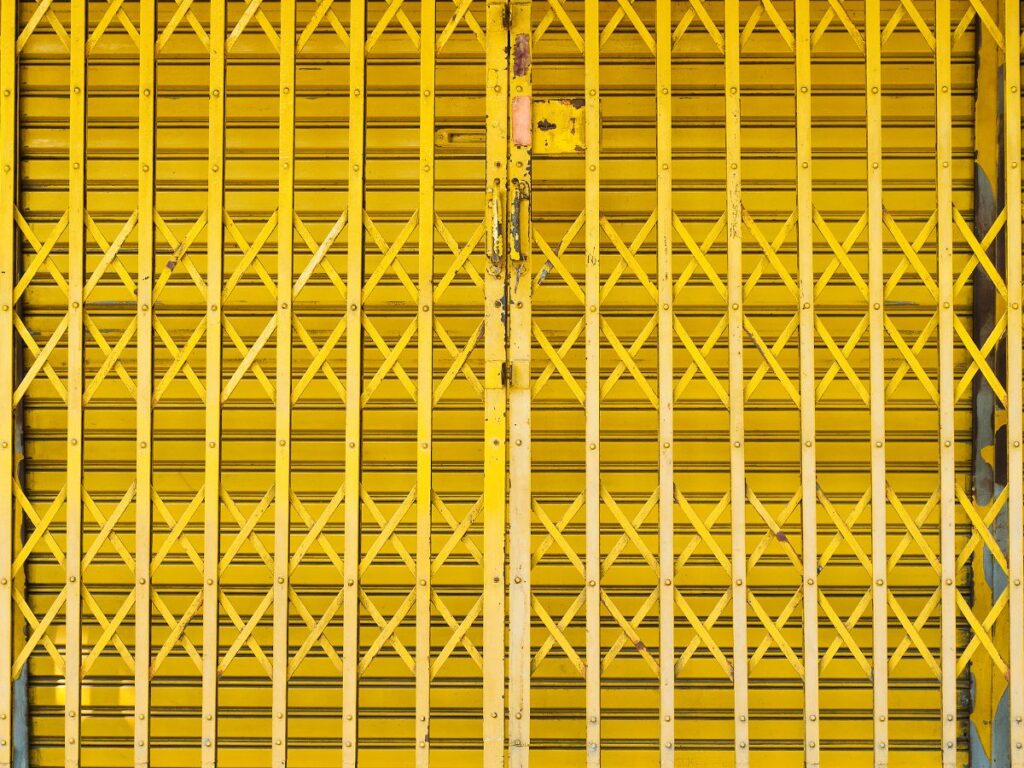
7. Folding Doors (Bi-Fold or Accordion Style)
When I toured an aircraft hangar, I was struck by how smoothly the massive folding doors opened. Instead of taking up overhead space, the panels stacked neatly to the side, giving planes and equipment full clearance. Folding doors use multiple hinged panels that fold together, creating wide entryways without relying on overhead tracks.
Where It Works Best
- Aircraft Hangars: Perfect for aviation facilities where extremely wide openings are needed. The folding design gives clear, unobstructed access.
- Large Distribution Warehouses: Works well in logistics hubs that move oversized pallets or equipment. The wide span supports heavy traffic.
- Multipurpose Storage Buildings: Useful in commercial estates or villas where doors must cover large areas but remain easy to operate.
Key Features
- Wide Span Coverage: Capable of handling very large openings. This makes them a reliable option for aviation, logistics, and industrial settings.
- Overhead Clearance: Operates without ceiling tracks, leaving roof space open for lighting or equipment. Businesses gain flexibility in layout planning.
- Automation Options: Many models can be motorized for convenience. This reduces the manual effort required to open and close large panels.
- Maintenance Demand: With multiple hinges and moving parts, these doors require more upkeep. If not maintained, they can become slow or uneven.
Final Thought
Folding doors are a practical solution for businesses that need wide, clear openings without overhead restrictions. However, alignment issues and the risk of uneven operation can make them less convenient over time.
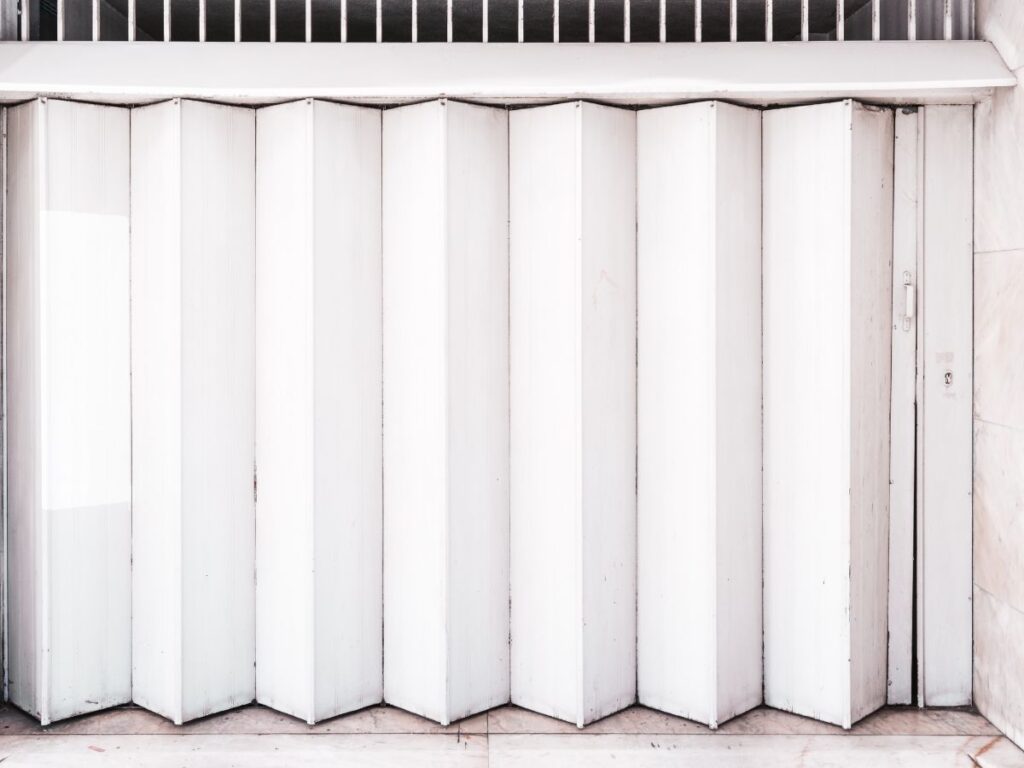
Final Tips Before You Choose Commercial Warehouse Doors
Selecting the right warehouse door is not just about appearance or cost. It’s about finding a solution that supports your business every single day.
- Think About Traffic Flow: Doors that open quickly are better for busy docks. Slower but stronger doors may be fine for low-traffic storage areas.
- Plan For Climate Control: Insulated doors help keep temperatures steady. This is critical for food storage, pharmaceuticals, or any goods sensitive to heat and cold.
- Check Safety Codes: Fire-rated doors may be legally required. They are designed to resist flames and close automatically when connected to alarms.
- Balance Cost And Longevity: A cheaper door might save you money upfront. Over time, a stronger model could last longer and reduce repair costs.
- Think About Space: Roll-up and folding doors save overhead clearance. Sliding doors need open wall space along the side, which can affect layout.
Every property has different needs, so the right door depends on your workflow, safety requirements, and long-term plans.
Choosing carefully gives you a door that supports your operations instead of slowing them down. Vallisco, as a dedicated door and window manufacturer, offers solutions that match both performance and practicality for commercial projects.
Conclusion
When I started this article, I shared how one wrong door choice slowed an entire project. Now you’ve seen the options: seven commercial warehouse door types, where they work, and what makes each one stand out.
You know the what and the why. You also know where each door fits and how it can help your business run better.
The next step is yours. Don’t wait for problems to force a change. Start now.
Which door do you see working best for your facility? Contact Vallisco today and let’s talk about the right fit for your project.
Learn More: Recommended Reads
Want to see more products? We’ve got plenty of options that might just be the perfect fit for you:
Still haven’t found what you’re looking for? Don’t hesitate to contact us. We’re available around the clock to assist you.



